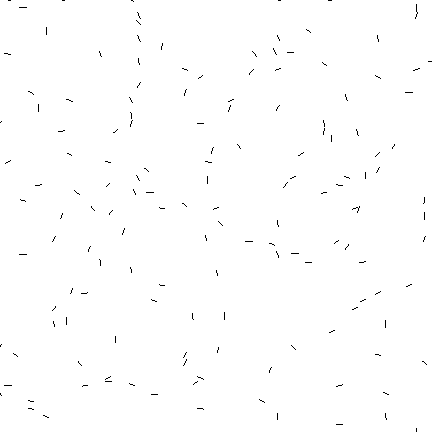Introduction
We consider the problem of segmenting out multiple contours bounding
salient objects in real images.
Given an edge image as in the one below:
 |
An example edge image. The image was synthetically
created from two copies of a
real image contour of a pear
superimposed on a background texture.
Can you spot the two salient contours bounding the pears ?
|
we would like to extract out separately
the individual contours bounding the two pears.
We wish to achieve such a segmentation
without any a-priori knowledge of the specific objects that generate
these contours. Such a task is one of the goals of
perceptual grouping .
In lieu of any specific knowledge about the objects generating the contours,
we impose some of the Gestalt principles for perceptual organization.
Most previous approaches to perceptual grouping of edges have incorporated
the local principles of proximity of edges and smooth-continuation of contours
in some form or other.
Successive edges of a contour are expected to be in close proximity.
Furthermore, we consider objects whose bounding contours are
(possibly piece-wise) smooth.
These two principles are based on local properties of contours.
In addition to these two principles,
we exploit the more global property of the closure of contours
bounding an object. Barring occlusion, a strong characteristic of contours
bounding objects is that they are closed. This property cannot be characterized
by any local property of the contour as is the case for proximity
and smooth-continuation.
Shyjan Mahamud
Last modified: Tue Sep 8 18:45:14 EDT 1998

